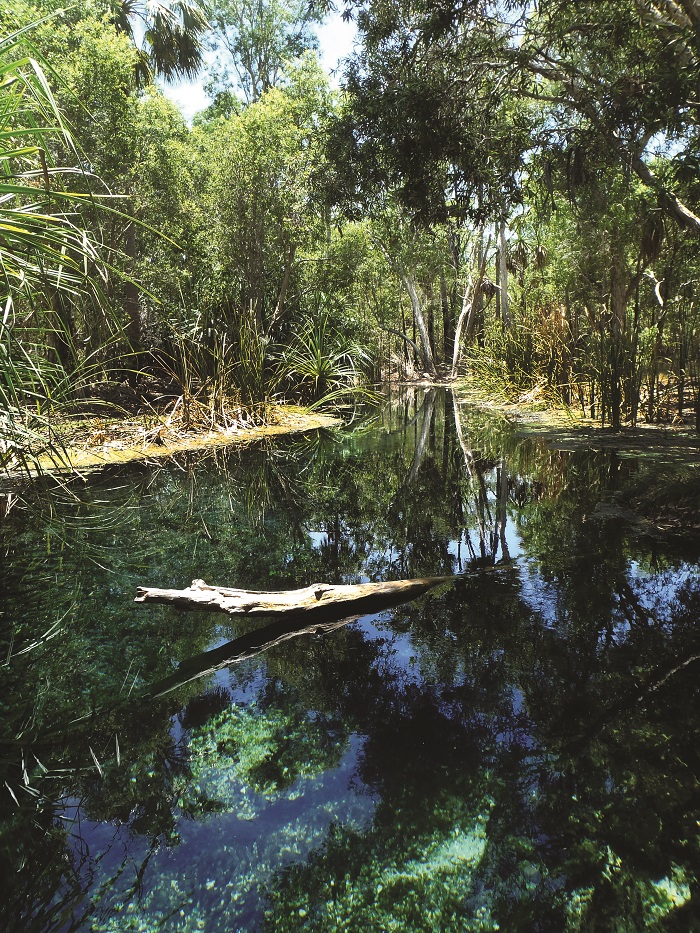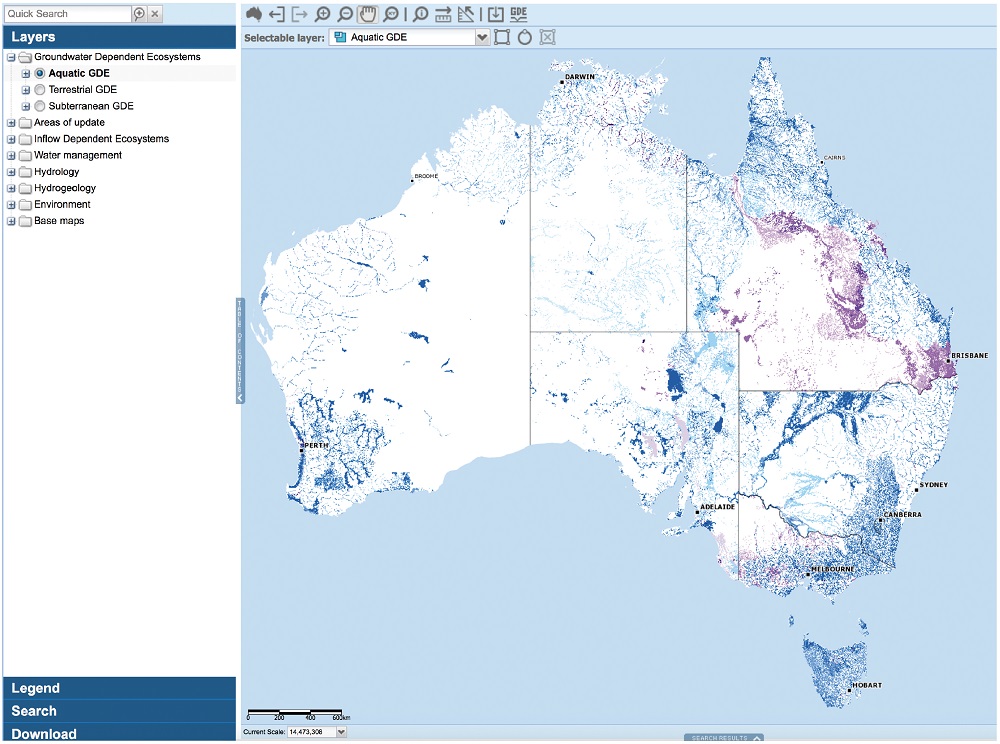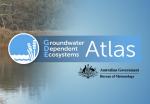Mapping groundwater-dependent ecosystems
12 July 2017
Many rivers, landscapes, plants and animals need groundwater to support their health. In fact, some of Australia’s most spectacular landscapes rely on groundwater to sustain them in dry times—or all of the time. But they can also be your local creek, park or water supply. Being dependent on an underground, ‘hidden’ water source, means these ecosystems can be vulnerable. So why do they matter and how can they be protected?
What are groundwater-dependent ecosystems?
Any ecosystem—community of plants, animals and other organisms, and the environment they live in—that relies on groundwater is known as a groundwater-dependent ecosystem (GDE). There are three main types of groundwater-dependent ecosystems:
- Aquatic ecosystems that rely on groundwater welling up to the surface—this includes surface water ecosystems that have a groundwater component, such as rivers, wetlands and springs. Marine and estuarine ecosystems can also be groundwater dependent.
- Terrestrial ecosystems that rely on groundwater— this includes all vegetation ecosystems, like bushland, forests, and even mature trees that may line your street.
- Subterranean ecosystems—this includes cave and aquifer ecosystems inhabited by unusual types of worms, snails and shrimps.
Why are they important?
GDEs can have significant ecological value. They provide essential habitat for plants and animals, particularly offering refuge during extended dry periods. They can reduce the effects of floods and droughts, diminish soil erosion and nutrient loss, and even treat pollutants and contaminants.
These ecosystems also have an economic value. They provide water for human consumption and agriculture, as well as tourism opportunities. For example, many agricultural activities depend on water supplied by rivers, which in turn can depend on inflows from groundwater, especially during dry periods.
They also have social and cultural values, including for recreation and as sites of cultural importance for Indigenous people, such as springs that provide permanent waterholes in dry regions.

Image: Bitter Springs in the Mataranka region, Northern Territory, an aquatic GDE and popular tourist attraction. Credit: Merryn Coutts
How can we protect them?
In many parts of Australia, there is increasing pressure on groundwater from human activities such as construction, excavation, pollution and pumping associated with agriculture, mining and urban developments.
Activities that change groundwater flow patterns, or add salt or pollution to groundwater can degrade GDEs. For example, groundwater pumping (for agricultural irrigation or urban water supply) can lower groundwater levels, meaning the GDEs may no longer receive enough water to survive.
Knowing where groundwater-dependent ecosystems are, their characteristics and interactions with other landscape features, means they can be considered in planning and management decisions for activities that may affect them.
Want to find out about them?
The Groundwater Dependent Ecosystems Atlas (GDE Atlas) is a map-based inventory of GDEs in Australia. You can move around and zoom using the interactive map, view and query the data or download it for further analysis. Use the powerful search functionality to build up complex searches based on the location and characteristics of GDEs you are interested in. Supporting information and extensive help functions allow you to find exactly what you need.

Image: Screen shot of the GDE Atlas showing the aquatic GDE layer.
More information
Find out more about groundwater around Australia, including the GDE Atlas, through our groundwater information suite.

Subscribe to this blog to receive an email alert when new articles are published.


Comment. Tell us what you think of this article.
Share. Tell others.